Let’s face it. It’s hard to get a gaming group together sometimes. We might be in the middle of a board game renaissance, but that doesn’t mean people suddenly have infinite time. One of the worst feelings is getting a game you’re super excited about and then not being able to play it for ages. Even the biggest board game influencers have a shelf of shame. Luckily, many games are starting to come out that feature a solo option for people who can’t meet with a group (or don’t want too). The games we review at The Fandomentals run the gamut from simple party games to epic strategy, and an increasing number of them do have a solo option. But how good are these options? Are they just tacked on, or do they truly offer a worthwhile alternative or supplementary mode of play for the lonesome gamer? In this series, we’ll pick one out and only play it as a solo player, with all gameplay and mechanics notes centered on that playstyle. The numbers at the end are for the game as played by one person, and don’t take into account how it plays with a group.
With all that in mind, let’s dig into Wayward.
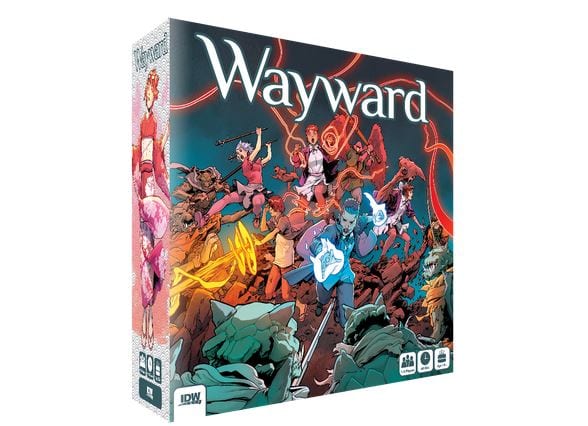
A brand new release from the folks at IDW Games, Wayward is the official adaption of the Image comics series of the same name. It follows the Irish-Japanese girl Rori Lane as she and her band of misfits fight to defend Tokyo from the forces of evil. Described by many as a modern take on Buffy The Vampire Slayer, it finished its run in late 2019 after 30 issues. And yes, to address the elephant in the room, this is a series about Japanese characters and steeped in Japanese folklore…written and drawn by white people. It’s not necessarily a disrespectful take, nor are the Yokai themselves badly researched, there’s just some parts of the game that might strike you as a tad…problematic.
What’s In The Box?
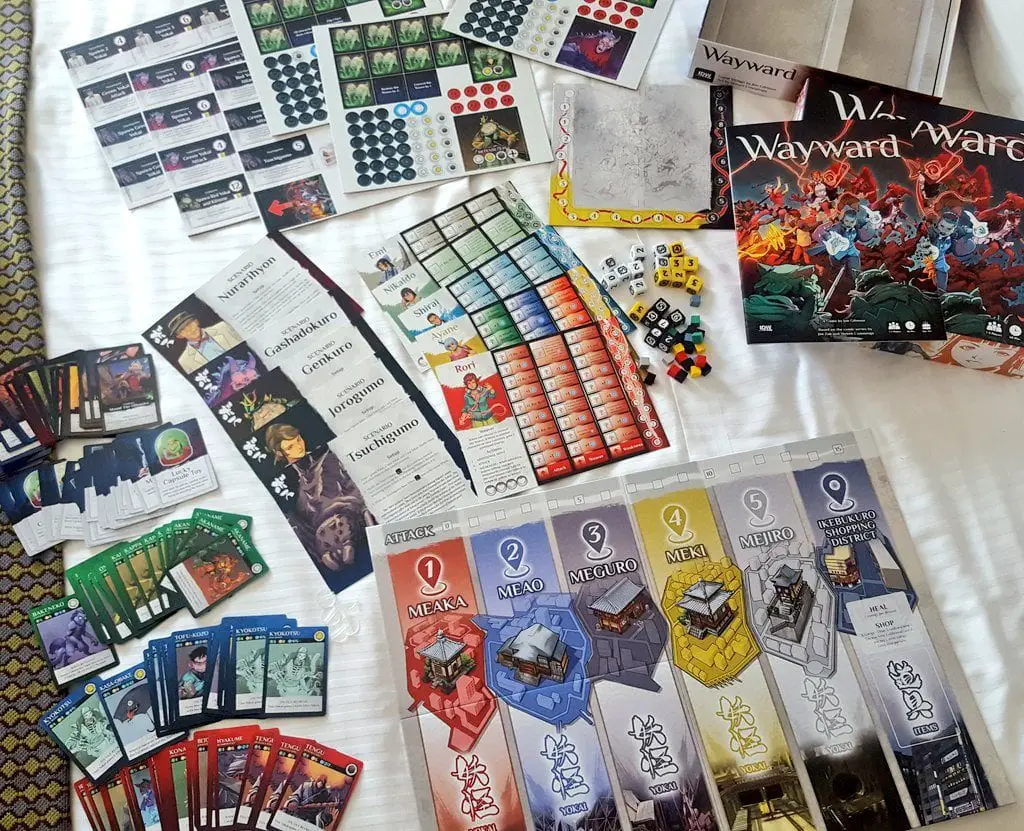
I’ll admit off the bat that I’ve not read Wayward, but it’s clear to me that fans of the series will not be disappointed in the presentation of this game. The whole thing is rendered in beautiful colors that give it a real pop when it’s laid out on the table. Like many of IDW’s licensed games, the art mainly comes from the source material but, also like most IDW games, there’s also brand new art from Steven Cummings to flesh things out more. The cards for each character and villain are really big and, honestly, poster-quality while doubling as each player’s main board.
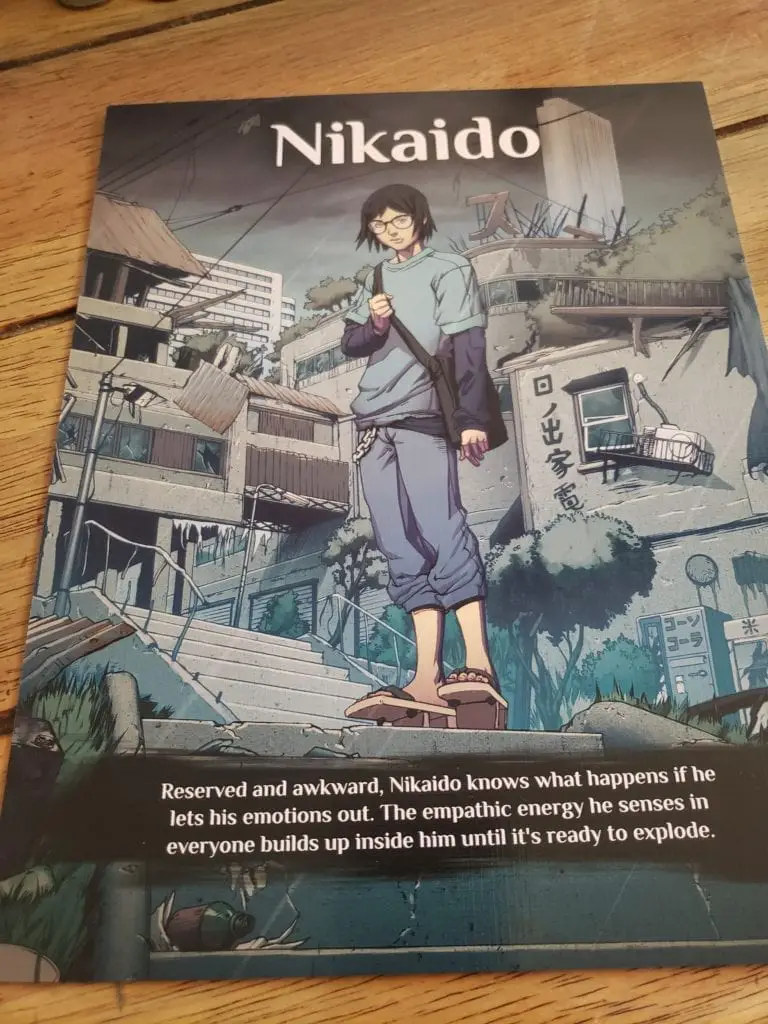
Each villain has their own scenario, and each also comes with a set of tokens and cards that are used to fight the Wayward children (the players). These all have their own flavor, but they are a little fiddly and easy to scatter. One, in particular, Jorugomo, has 65 teeny tiny influence tokens about the size of the dregs out of a three-hole-punch. They’re very well printed at that size, but they can be a pain. Plus IDW continues their unfortunately woeful lack of bags with Wayward, packing more than past games but not nearly enough considering how many components the game has.
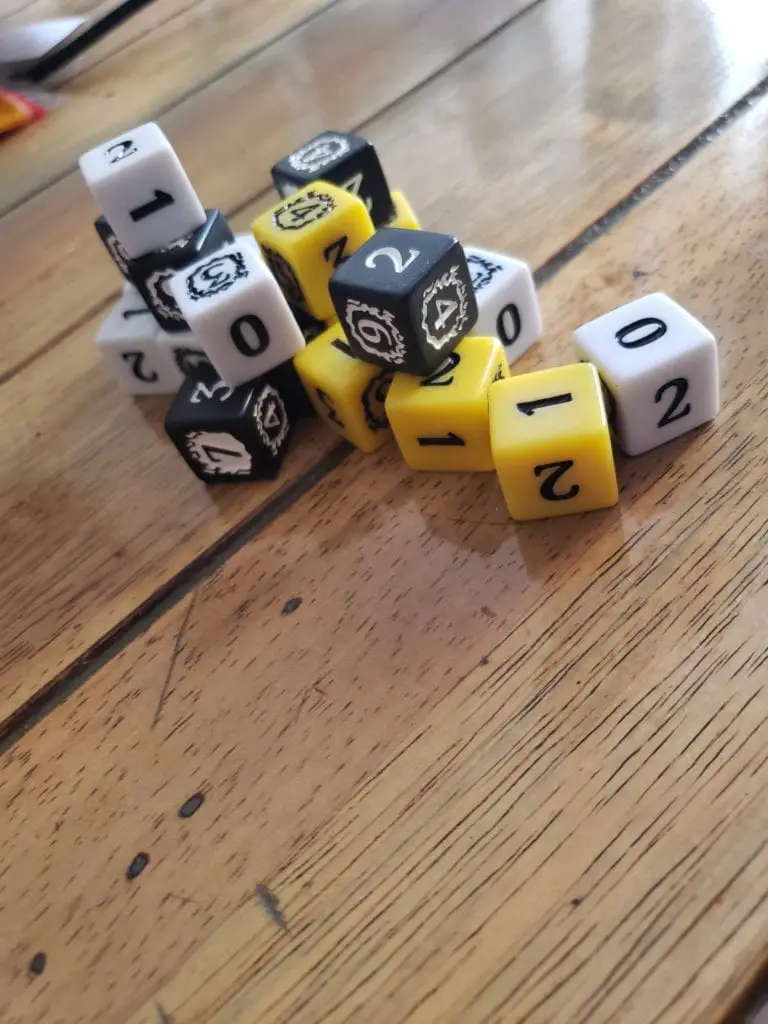
IDW does continue to produce fantastic custom components for their games, with the dice included in Wayward being truly fantastic little things that roll well and fit the aesthetic of the game. Most of the other game components are cardboard, but are well printed and look nice. Their main characters are represented by cardboard standees in the standard edition (minis in the Signature Edition), and they’re high-def and well-rendered so players can find themselves easily. The Signature Edition upgrades a lot of these components but honestly, you’re getting a lot of good value in the base game as well.
How’s It Play (When You’re Alone)?
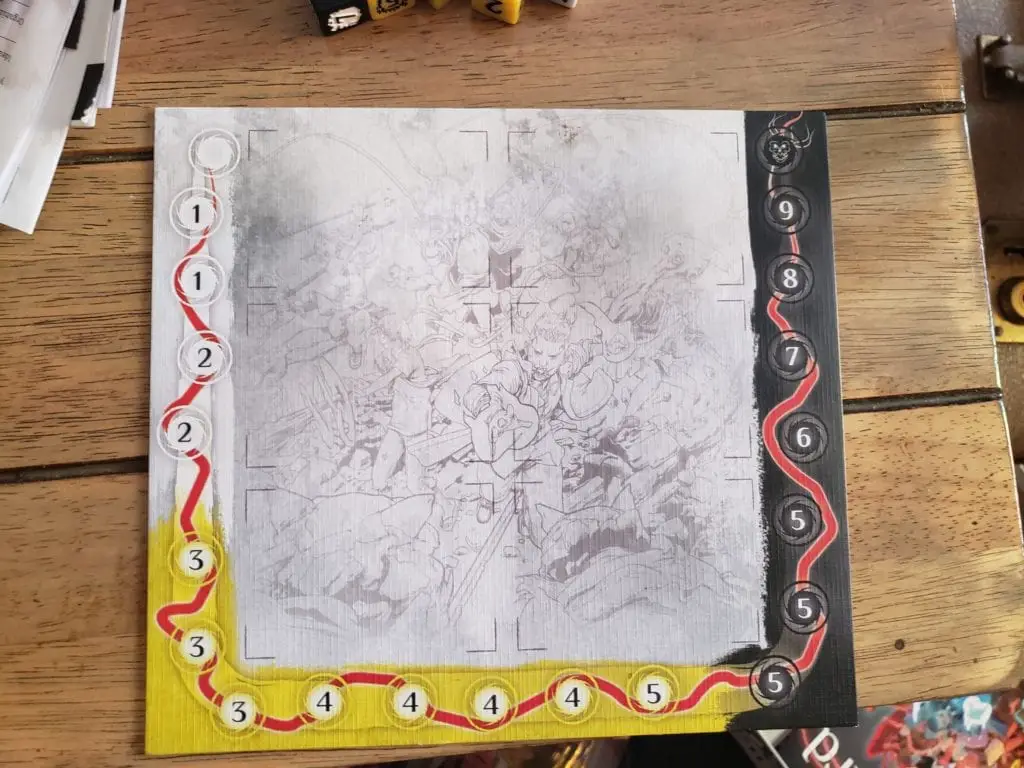
The game, in concept, plays like a lot of other co-op superhero games (think Sentinels of the Multiverse): Each player has special powers, you work in tandem to beat minions and overcome obstacles, get stronger, and keep some outside track from getting too far along. The big difference here is that there’s quite a bit of chance thrown into the game. Attacks against the Yokai, the main henchmen of the game, or bosses are not set, instead, players have to essentially bet how much attack they’re going to use (from a changing pool of actions). This also includes if they’re going to do more specialized attacks. Only then are the enemy’s dice rolled to decide what their defense is going to be. It adds a really neat element of guessing and pushing your luck that co-op games often shy away from, and it means that sometimes really hard enemies might die easier than you think (or vice versa). This also comes into play when characters gain energy by picking cards off of the Weave board. Each one gives you a certain amount of energy, but comes with a drawback that affects the board state. The more energy you get, the more problematic the event will be.
Each character has a set of powers as well as their attack and move actions, some more than others. They have health and an Energy track that they use to use those actions. Every time that a player beats an enemy, they get a certain amount of upgrade points to distribute. As the game goes along and the things get harder, your character will be getting stronger along with it and, hopefully, able to handle bigger challenges.
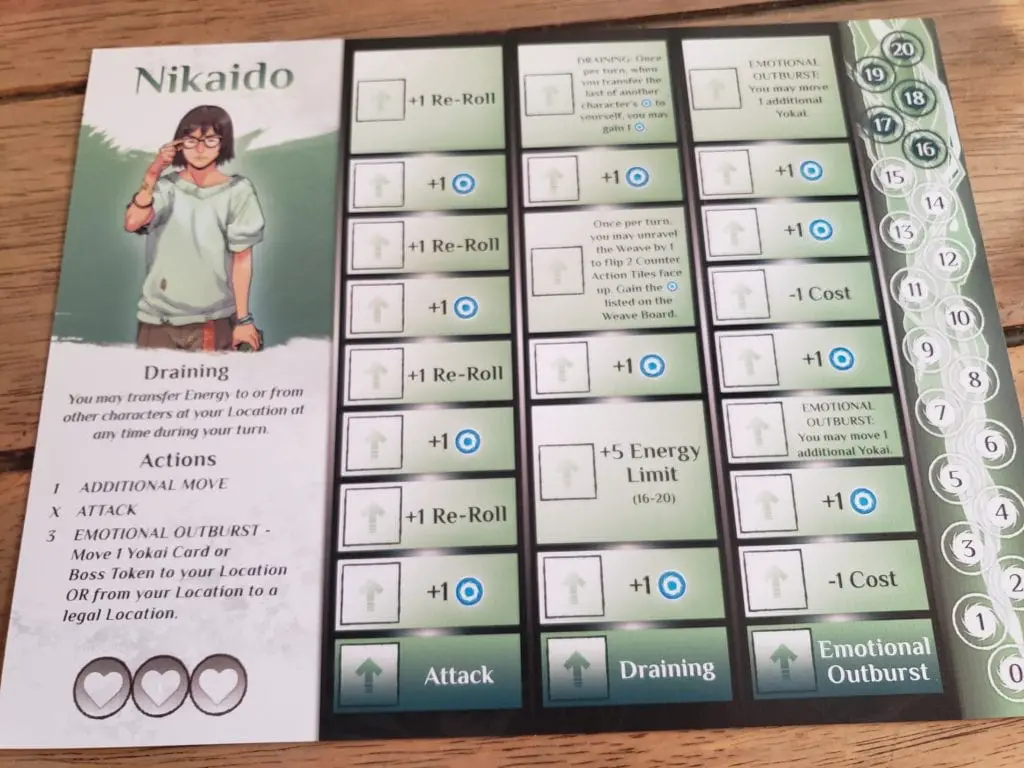
Solo play in Wayward is…weird. There aren’t any explicit rules in the book for solo play, and there aren’t any particular ways to balance it. In theory, and I tried this method, you could play any number of Wayward children at a time to fight a boss. This is especially necessary since four of the characters have powers that rely on allies to be effective. This also makes the game a little more equitable, because you end up distributing the upgrade points between people. When I played solo games with only one character, I ended up snowballing HARD because I just got to hoard the upgrade points (this was especially problematic on Ayane, who just gets really good at killing Yokai). It’s genuinely fun to play solo, and the “AI” of the bosses is well constructed enough to be worth challenging. The problem is mostly having to make a few logical leaps here and there as you guess what your solo version of the game might look like, which is a shame for a game that explicitly states it can be played solo.
The Verdict

I think that this game is certainly a must-buy for fans of the Wayward comics. It has a great look and is loaded with tons and tons of references and Easter eggs that I’m sure avid readers will get a kick out of, and these bonuses mean that even solo you can for sure have a great time reliving the comic in cardboard form.
For everyone else, I think you may want to pick this up only if you have a group. It’s clearly built for at least two players, and it’s hard to tell what IDW’s idea of a solo version is. The lack of direction causes a lot of confusion, guessing, and assumption that can really distract from playing the game. If you do play it solo, I can definitely say you use a lot of the game. You’re going to get your money’s worth either way.
[rwp_box id=”0″]
You can pick up Wayward as a Barnes & Noble exclusive, where it retails for $49.99.
Images via IDW Games

